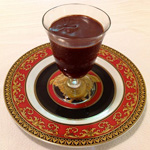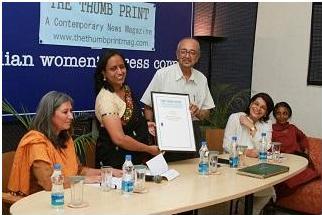Let’s start the New Year with a super healthy recipe: Tabbouleh. This dish comes from the Middle East where it is one of the most common salads. In recent years, Tabbouleh has conquered the world with other Mediterranean delights like hummus, Baba Ganoush and falafel. During this voyage it has seen many transformations, similar to pizza that exists now in versions that have little to do with the original.
I like to prepare Tabbouleh in a way that resembles the original. That means my main ingredient is flat leaf parsley, followed by mint. You take about double the amount of parsley to mint. What I use sparingly (though more than in the Middle East) is the wheat. For the original Tabbouleh Lebanese and Syrian housewives use bulgur wheat. Although you can find this in India, where we live, it is quite expensive and not as fresh as the local cracked wheat that is called daliya.
In some western countries Tabbouleh has morphed into a salad whose main ingredient is bulgur. Although this can make quite a pleasant meal, it has little to do with the original. The seasoning of the salad differs widely. Please use anything you fancy. I like it with plenty of black pepper and Zatar powder, but people also add cinnamon or other spice mixtures.
Tabbouleh makes an excellent side dish for meat or fish. The downside of this dish is that you have to eat it preferably on the same day it is made. It is not a salad, which you can keep in the fridge for any length of time. I actually like Tabbouleh as a main course with a bit of bread and a piece of cheese. It makes a perfect light lunch on a hot day.
Wishing you happy cooking, always!
Ingredients (for 4 big servings):
- 2 big bundles flat leaf parsley (about 200 grams or around 3 cups of uncut leaves)
- 1 big bundle mint (about 100 grams)
- ½ cup bulgur wheat (daliya)
- 2 big spring onions or several tiny ones
- 3 tomatoes
- 2 – 3 lime
- 8 tablespoons extra virgin olive oil
- Salt
- Pepper
- Zatar powder
Method:
Wash the tomatoes and dice them. Place them into a bowl and add the daliya. Some people recommend soaking the wheat in hot water, but I don’t think that is necessary. The moisture from the tomatoes and the herbs is enough to soften the cracked wheat when you let the tabbouleh sit for a bit before serving it. If you want to serve the salad immediately, you might want to mix the wheat with three tablespoons hot water.
Wash the herbs and drain them. Pluck the parsley leaves from the stems and cut them. You should not use the food processor for this job because it is damaging the structure of the leaves too much. For tabbouleh you have to cut the parsley by hand with a sharp knife. Take a handful of leaves, bundle them with one hand and cut them as finely as possible. Do the same with the mint leaves.
Wash and clean the spring onions and slice them finely. Add them to the bowl.
Squeeze the lime over the salad; add the olive oil and season with salt, pepper and other spices. I like Zatar powder because it adds a bit of zest to the salad. Zatar is made from ground thyme, salt, sumac and sesame seeds.
Go green with herbs
Green herbs are packed with nutrients. They do not only add taste to any dish, they also bless us with many health benefits. The humble parsley is as widely used in Europe as coriander is in Asia. The word parsley has it roots in the Greek word petroselīnon meaning rock celery. Native to Mediterranean Europe, it was first used as a medicine.
During the middle Ages, cooks started to season dishes with parsley. This herb contains vast amounts of vitamin C, vitamin A and folic acid. Parsley’s volatile oils help neutralise particular types of carcinogens (like the benzopyrenes that are part of cigarette smoke and charcoal grill smoke). According to scientific research, eating a lot of parsley helps keep your heart and cardiovascular system healthy and can prevent rheumatic arthritis.
Mint is actually named after a nymph called Minthe. This delightful creature appeared in the Greek mythology as a female that attracted Pluto’s attention. His jealous wife Persephone changed Minthe into a plant. Sorrowful Pluto could not reverse the magic spell, but he gave her a sweet smell. From ancient times, mint is used all over the world. There are more than 25 different species of mint with slightly different aromas.
Mint relieves cramps of the belly because it is able to relax muscles. It is a useful herb in case of indigestion, dyspepsia and irritable bowel syndrome. Animal studies have shown that the phytonutrient monoterpene in mint stops the growth of pancreatic, mammary and liver tumors and protects against caner in the colon, skin and lungs. However, there are no proper human studies yet.







































